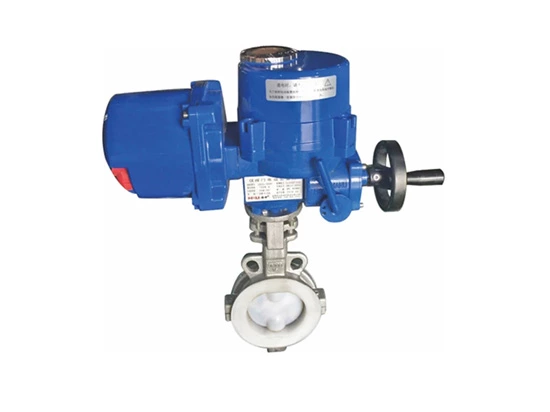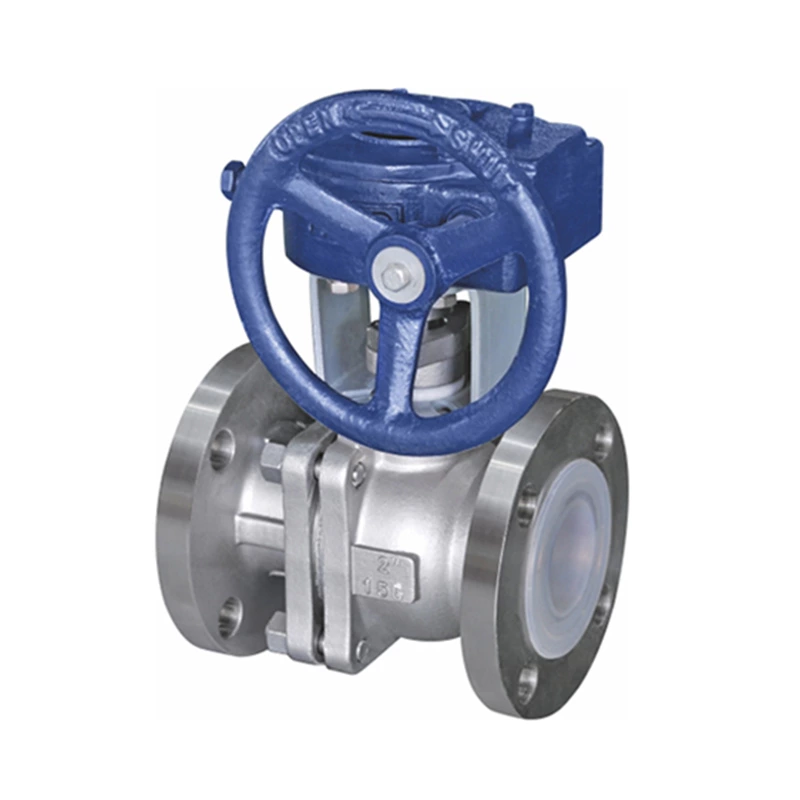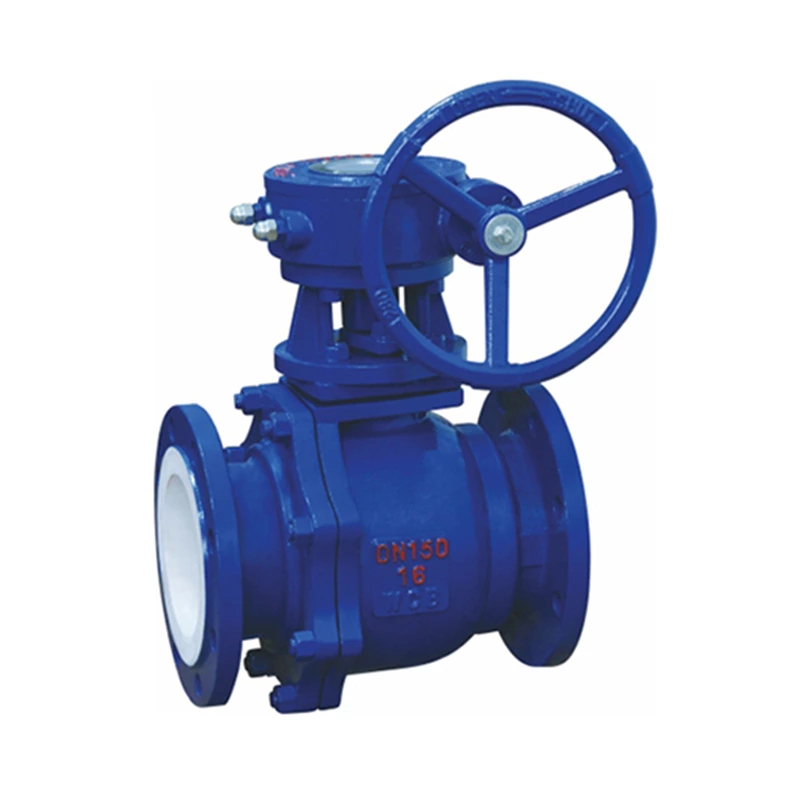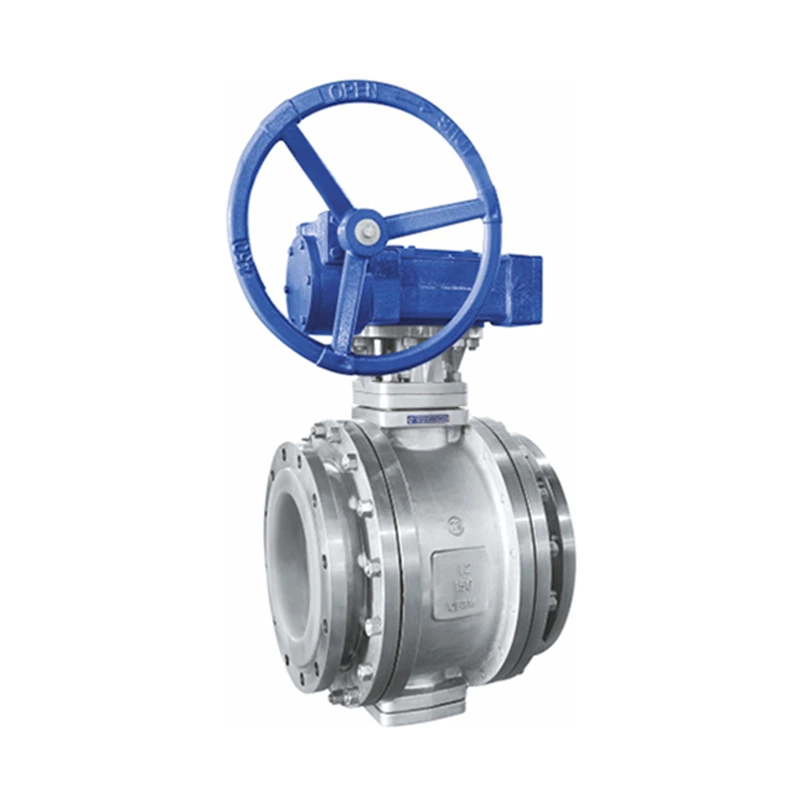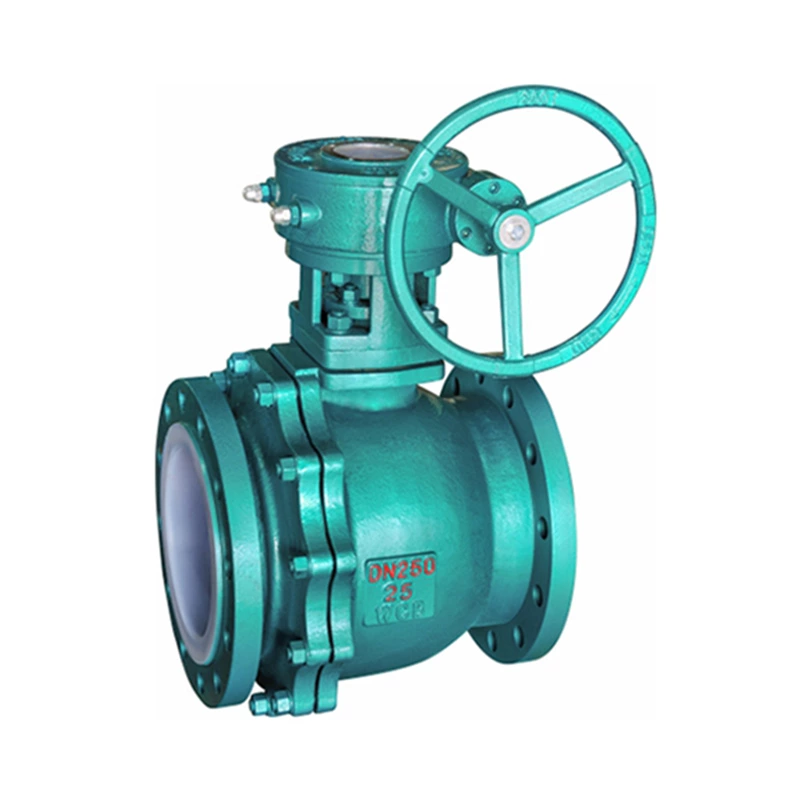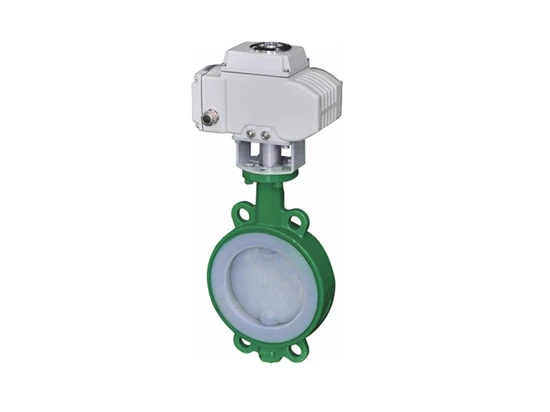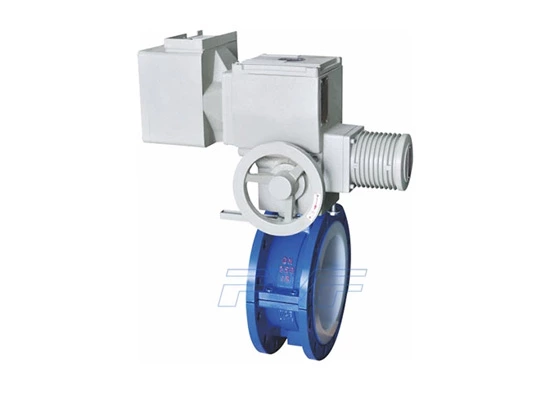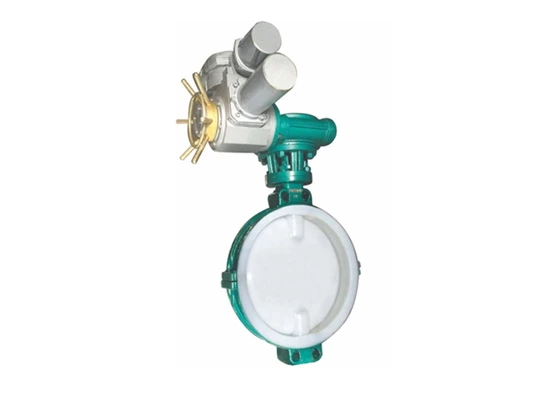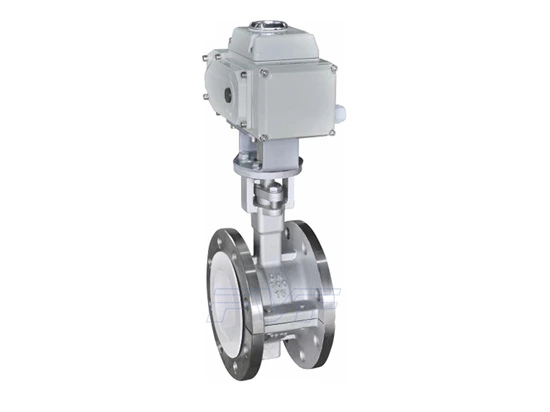Valve Sealing
The requirements for valve sealing performance should be based on the prevention of leakage. According to the different parts and degrees of leakage, the leakage of the valve is different. Therefore, different anti-leakage measures need to be proposed.
Lined Valve Sealing Principle
Sealing is to prevent leakage, so the valve sealing principle is also studied from the perspective of preventing leakage. There are two main factors causing leakage. One is the main factor affecting the sealing performance, that is, there is a gap between the sealing pairs, and the other is the pressure difference between the two sides of the sealing pair. The valve sealing principle is also analyzed from four aspects: the sealing of the liquid, the sealing of the gas, the sealing principle of the leakage channel, and the valve sealing pair.
Liquid sealing
The sealing of the liquid is carried out through the viscosity and surface tension of the liquid. When the capillary of the valve leakage is filled with gas, the surface tension may repel the liquid or introduce the liquid into the capillary.
This forms a tangent angle. When the tangent angle is less than 90°, the liquid will be injected into the capillary, so leakage will occur. The reason for the leakage is the different properties of the medium. When testing with different media, different results will be obtained under the same conditions.
You can use water, air or kerosene, etc. When the tangent angle is greater than 90°, leakage will also occur. This is related to the grease or wax film on the metal surface.
Once these surface films are dissolved, the properties of the metal surface change, and the liquid that was originally repelled will wet the surface and leak. In view of the above situation, according to Poisson's formula, the purpose of preventing leakage or reducing leakage can be achieved by reducing the capillary diameter and the viscosity of the medium.
Gas sealing
According to Poisson's formula, the sealing of the gas is related to the gas molecules and the viscosity of the gas. Leakage is inversely proportional to the length of the capillary and the viscosity of the gas, and is proportional to the diameter of the capillary and the driving force.
When the diameter of the capillary is the same as the average degree of freedom of the gas molecules, the gas molecules will flow into the capillary with free thermal motion. Therefore, when we are doing a valve sealing test, the medium must be water to play a sealing role, and air, that is, gas, cannot play a sealing role.
Even if we reduce the capillary diameter to below the gas molecule by plastic deformation, we still cannot stop the flow of gas. The reason is that the gas can still diffuse through the metal wall. So when we do gas tests, we must be more strict than liquid tests.
Sealing principle of leakage channel
The valve seal consists of two parts: the unevenness scattered on the waveform surface and the waviness of the distance between the peaks. In the case that the elastic strain of most metal materials in my country is low, if you want to achieve a sealed state, you need to put forward higher requirements on the compression force of the metal material, that is, the compression force of the material must exceed its elasticity.
Therefore, when designing the valve, the sealing pair is matched with a certain hardness difference, and under the action of pressure, a certain degree of plastic deformation sealing effect will be produced.
If the sealing surface is all metal material, then the uneven protrusions on the surface will appear very early, and at the beginning, only a small load is needed to cause these uneven protrusions to produce plastic deformation. When the contact surface increases, the surface unevenness will become plastic-elastic deformation. At this time, the roughness of the two sides in the concave will exist.
When a load that can cause severe plastic deformation of the underlying material is applied, and the two surfaces are in close contact, these remaining paths can be sealed along the continuous line and circumferential direction.
Valve seal pair
The valve seal pair is the part of the valve seat and the closing member that closes when they contact each other. During use, the metal sealing surface is easily damaged by the inclusion of media, media corrosion, wear particles, cavitation and erosion. For example, wear particles.
If the wear particles are smaller than the surface roughness, the surface accuracy will be improved when the sealing surface is run-in, and will not deteriorate. On the contrary, it will deteriorate the surface accuracy. Therefore, when selecting wear particles, factors such as its material, working conditions, lubricity and corrosion to the sealing surface should be comprehensively considered.
Just like wear particles, when we select seals, we must comprehensively consider various factors that affect their performance in order to play a leak-proof function. Therefore, materials that are resistant to corrosion, abrasion and erosion must be selected. Otherwise, the lack of any one requirement will reduce its sealing performance.
Main factors affecting valve sealing
There are many factors that affect valve sealing, mainly the following:
Seal pair structure
Under the change of temperature or sealing force, the structure of the seal pair will change. And this change will affect and change the mutual force between the seal pairs, thereby reducing the performance of valve sealing.
Therefore, when selecting seals, be sure to choose seals with elastic deformation. At the same time, pay attention to the width of the sealing surface. The reason is that the contact surface of the seal pair cannot be completely matched. When the width of the sealing surface increases, the force required for sealing must be increased.
Sealing surface specific pressure
The specific pressure of the sealing surface affects the valve sealing performance and the service life of the valve. Therefore, the sealing surface specific pressure is also a very important factor. Under the same conditions, too large a specific pressure will cause damage to the valve, but too small a specific pressure will cause valve leakage. Therefore, we need to fully consider the suitability of the specific pressure when designing.
Physical properties of the medium
The physical properties of the medium also affect the valve sealing performance. These physical properties include temperature, viscosity and surface hydrophilicity. Temperature changes not only affect the relaxation of the sealing pair and the change of part size, but also have an inseparable relationship with the viscosity of the gas. The viscosity of the gas increases or decreases as the temperature rises or falls.
Therefore, in order to reduce the impact of temperature on the sealing performance of the valve, we should design it into a valve with thermal compensation such as an elastic valve seat when designing the sealing pair. Viscosity is related to the permeability of the fluid.
When under the same conditions, the greater the viscosity, the smaller the permeability of the fluid. The hydrophilicity of the surface means that when there is a thin film on the metal surface, this film must be removed. Because this thin oil film will destroy the hydrophilicity of the surface and cause the passage of the fluid to be blocked.
The quality of the sealing pair
The quality of the sealing pair mainly refers to the selection, matching, and manufacturing accuracy of the materials we need to check. For example, the valve disc and the valve seat sealing surface are very consistent, which can improve the sealing performance. The characteristic of more circumferential corrugations is that its labyrinth sealing performance is good.
Valve leakage is very common in life and production. It can cause waste or bring danger to life, such as water valve leakage, or lead to serious consequences, such as leakage of toxic, harmful, flammable, explosive and corrosive media in the chemical industry, which seriously threatens personal safety, property safety and environmental pollution.
A valve that relies on external force to rotate and close is designed with a sealing device, which is used to install a certain number of packing seals in the stuffing box to achieve a sealing effect, but how is the sealing condition?
Leakage at the packing of the valve is one of the parts that are prone to leakage failure in the valve, but there are roughly two reasons for it.
Valve sealing form
Seals are also very critical components in valves. The sealing performance of the valve refers to the ability of each sealing part of the valve to prevent the leakage of the medium, which is an important technical performance indicator of the valve.
There are three sealing parts of the valve:
The contact between the opening and closing parts and the two sealing surfaces of the valve seat; the matching part between the packing and the valve stem and the stuffing box; the connection between the valve body and the valve cover. The leakage in the first place is called internal leakage, which is usually called loose closure, which will affect the ability of the valve to cut off the medium. For cut-off valves, internal leakage is not allowed. The leakage in the last two places is called external leakage, that is, the medium leaks from the inside of the valve to the outside of the valve.
External leakage will cause material loss, pollute the environment, and cause accidents in serious cases. For flammable, explosive, toxic or radioactive media, external leakage is even more unacceptable, so the valve must have reliable sealing performance.
How to solve the sealing problem cannot be ignored, valve running, bubbling, dripping, and leaking. Next, we will discuss the dynamic and static sealing problems of valves.
Dynamic sealing
The dynamic sealing of valves mainly refers to the valve stem sealing. Preventing the medium in the valve from leaking with the movement of the valve stem is the core issue of the dynamic sealing of valves.
Stuffing box form: The dynamic sealing of valves is mainly based on stuffing boxes. The basic forms of stuffing boxes are:
1. Gland type: This form is used very often.
The unified form can be distinguished in many details. For example, from the perspective of clamping bolts, they can be divided into T-bolts (for low-pressure valves with a pressure of ≤16 kg/cm2), stud bolts and live bolts, etc. From the perspective of glands, they can be divided into integral and combined types.
2. Compression nut type: This type has small dimensions, but the clamping force is limited and is only used for small valves.
Packing: In the stuffing box, the packing is in direct contact with the valve stem and fills the stuffing box to prevent the medium from leaking out. The following requirements are placed on the packing:
Good sealing;
Corrosion resistance;
Low friction coefficient;
Adapt to the temperature and pressure of the medium.
Bellows seal:
The chemical industry and atomic energy industry have grown rapidly, and the number of flammable, explosive, highly toxic and radioactive materials has increased, which has put more stringent requirements on valve sealing. Some places can no longer use packing seals, and a new sealing form - bellows seal has emerged. This type of seal does not require packing, also known as packing-free seal.
The two ends of the bellows are welded to other parts. When the valve stem rises and falls, the bellows expands and contracts, and the bellows itself does not leak, so the medium cannot leak out. For the sake of insurance, bellows and packing are often used for double sealing.
Static seal
What is a static seal? Static seal usually refers to the seal between two stationary surfaces. The main sealing method is to use gaskets.
Commonly used gasket performance:
When using valves, the original gaskets are often replaced according to specific circumstances. Common gaskets include: rubber flat gaskets, rubber O-rings, plastic flat gaskets, polytetrafluoroethylene gaskets, asbestos rubber gaskets, metal flat gaskets, metal special-shaped gaskets, metal foreskin gaskets, corrugated gaskets, surrounding entangled gaskets, etc.
1. Rubber flat gasket: easy to deform, not difficult to press, but poor pressure and temperature resistance, only used for low pressure and low temperature. Natural rubber has certain acid and alkali resistance, and the use temperature should not exceed 60℃; chloroprene rubber can also resist certain acids and alkalis, and the use temperature is 80℃; nitrile rubber is oil-resistant and can be used up to 80℃; fluororubber has good corrosion resistance and better temperature resistance than ordinary rubber, and can be used in 150℃ medium.
2. Rubber O-ring: The cross-sectional shape is a perfect circle, with a certain self-tightening effect, better sealing effect than flat washers, and smaller clamping force.
3. Plastic flat washers: The characteristics are good corrosion resistance and poor temperature resistance. Polytetrafluoroethylene is the crown of plastics, with excellent corrosion resistance and a wide temperature resistance range. It can be used for a long time within -180℃ to +200℃.
4. Polytetrafluoroethylene-wrapped washers: fully play the advantages of polytetrafluoroethylene, and at the same time make up for its poor elasticity, and make polytetrafluoroethylene-wrapped rubber or asbestos rubber washers. In this way, it is as corrosion-resistant as polytetrafluoroethylene flat washers, and has elasticity, enhances the sealing effect, and reduces the clamping force.
5. Asbestos rubber gasket: cut from asbestos rubber sheet. It is composed of 60-80% asbestos and 10-20% rubber, filler, vulcanizer, etc. It has good heat resistance, cold resistance, chemical stability, abundant supply and low price. When using, the clamping force does not need to be very sticky. It can adhere to metal, and try to apply a layer of graphite powder on the surface to avoid difficulty when disassembling.
6. Metal flat heat ring: lead, temperature resistance 100℃; aluminum 430℃; copper 315℃; low carbon steel 550℃; silver 650℃; nickel 810℃; monel (nickel-copper) alloy 810℃, stainless steel 870℃. Among them, lead has poor pressure resistance, aluminum can withstand 64 kg/cm2, and other materials can withstand high pressure.
7. Metal anisotropic gasket:
Lens gasket: has self-tightening effect and is used in high-pressure valves.
Oval gasket: also belongs to high-pressure self-tightening gasket.
Conical double gasket: used for high-pressure internal self-sealing.
In addition, there are square, diamond, triangle, tooth, dovetail, B, C, etc., which are generally only used in high and medium pressure valves.
8. Metal sheath gasket: Metal has both professional temperature and pressure resistance and elasticity. Sheath materials include aluminum, copper, low carbon steel, stainless steel, monel alloy, etc. The filling materials inside include asbestos, polytetrafluoroethylene, glass fiber, etc.
9. Wave gasket: It has the characteristics of small clamping force and good sealing effect. It is often used in the form of a combination of metal and non-metal.
10. Surrounding entangled gasket: It is to put very thin metal belts and non-metal belts tightly together, entangled into multiple layers of circles, and the cross-section is wave-like, with good elasticity and sealing. Metal belts can be made of 08 steel, 0Cr13, 1Cr13, 2Cr13, 1Cr18Ni9Ti, copper, aluminum, titanium, monel alloy, etc. Non-metal belt materials include asbestos, polytetrafluoroethylene, etc.
When describing the performance of sealing gaskets, some figures are listed above. It must be noted that these figures are closely related to flange form, medium conditions and installation and repair technology. They can be exceeded or not. Pressure resistance and temperature resistance are also mutually converted. For example, when the temperature is high, the pressure resistance tends to decrease. These subtle problems can only be experienced in practice.
